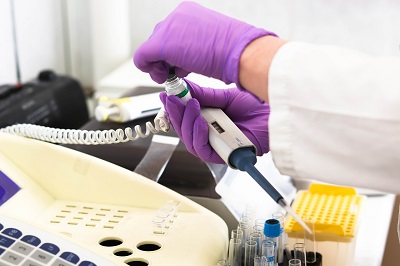B-Class Medical Device Registration in Indonesia MOH
B-Class Medical Devices in Indonesia refer to medical devices that are considered to have a moderate risk to patient health or safety. These devices typically have an intermediate level of complexity and may require clinical evaluation or performance testing to demonstrate their safety and effectiveness. They are classified under Indonesia’s medical device regulatory framework, which is overseen by the Indonesian Ministry of Health (MOH) through the Indonesian Food and Drug Authority (BPOM).
Key Features of B-Class Medical Devices:
- Moderate Risk: B-class devices are higher-risk than A-class (low-risk) devices but are not as high-risk as C- or D-class devices.
- Examples: These devices may include surgical instruments, dental equipment, diagnostic devices, and certain in-vitro diagnostic products.
- Regulation: B-class devices must comply with BPOM regulations, which require submission of detailed product documentation and possible safety data.
Steps to Apply for B-Class Medical Device Registration in Indonesia
Here’s a step-by-step guide for registering a B-class medical device with the Indonesian Ministry of Health (MOH):
1. Classify the Device
- First, confirm that your device qualifies as a B-class medical device under the Indonesian regulatory framework. BPOM classifies devices into four categories: A (low risk), B (moderate risk), C (high risk), and D (very high risk).
- The classification is based on factors such as the intended use, duration of contact with the body, and degree of invasiveness.
2. Prepare the Required Documents
You will need to compile a range of documents for your registration application, including:
- Product Information: A detailed description of the device, including its intended use, technical specifications, materials, and components.
- Manufacturing License: Certification that the device is produced in a licensed manufacturing facility.
- Free Sale Certificate: A certificate from the country of origin verifying that the device is legally sold and used there.
- Clinical Evaluation Data: If applicable, data or studies that demonstrate the safety and efficacy of the device.
- Risk Assessment: A risk analysis document showing that the device complies with applicable safety standards.
- Labeling: Product labels and user instructions in the Indonesian language (Bahasa Indonesia), as required by the regulations.
- Certificate of Conformity (if applicable): Demonstrates that the device complies with international standards (such as ISO 13485 or other relevant standards).
3. Engage a Local Authorized Representative
- If your company is based outside of Indonesia, you will need to appoint a local authorized representative in Indonesia. This representative will handle the registration process and act as your point of contact with BPOM.
- The authorized representative must be registered with BPOM and must take responsibility for the medical device in the Indonesian market.
4. Submit the Application
- Create an Account: Register an account on BPOM’s e-registration portal (also called the e-licensing system). This is the platform through which you submit your application for medical device registration.
- Submit Documentation: Fill out the required forms and upload all necessary documents through the e-registration portal. Ensure that all documents are complete and comply with BPOM's formatting and language requirements.
- Pay Fees: There may be application fees for the registration process. Payment details will be provided on the BPOM website.
5. BPOM Review and Evaluation
BPOM will evaluate your application and may request additional information or clarification during the review process. The review will assess:
- Product Safety and Performance: BPOM will assess the device’s safety, performance, and compliance with relevant regulations.
- Labeling and Instructions: The accuracy and completeness of your device’s labeling, including instructions in Indonesian.
- Risk Classification: BPOM will confirm that the device is correctly classified as B-class, and may ask for risk management or safety data to verify its risk profile.
6. Testing and Inspection (If Necessary)
For some B-class devices, BPOM may require additional testing or inspection to verify compliance with safety standards. This may involve:
- Performance Testing: Demonstrating the device's effectiveness and safety through clinical trials or laboratory testing.
- Local Testing: In some cases, BPOM may require the device to be tested in an accredited Indonesian testing laboratory.
7. Approval and Issuance of Registration Certificate
If BPOM is satisfied with the submitted application and supporting documents, it will issue a Registration Certificate (Surat Izin Edar - SIE). This certificate allows the device to be marketed and sold in Indonesia.
- The registration certificate will include the device’s registration number, which is required for legal distribution within the country.
8. Post-Market Surveillance and Compliance
- Once the device is registered, you must comply with post-market surveillance requirements set by BPOM. This includes:
- Reporting any adverse events or incidents involving the device.
- Regularly updating BPOM on product performance and safety.
- Maintaining documentation for inspection or audit purposes.
Key Considerations
- Labeling: All documentation, including labels, packaging, and user instructions, must be provided in Bahasa Indonesia.
- Local Representation: Having a local representative is not always mandatory, but it can significantly simplify the process.
- Regulatory Updates: Stay informed about changes in Indonesian medical device regulations, as these may affect your registration process.
By following these steps, you can successfully register a B-class medical device in Indonesia, ensuring compliance with local regulatory requirements and allowing you to market your device in this growing healthcare market.

Whatsapp or Wechat:+86 15816864648;email address:hito.lin@grzan.cn
.png)
.jpg)
.png)

.png)